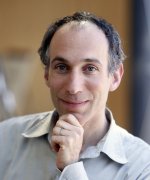Ancient DNA and the new science of the human past

David Reich, D. Phil.
Professor of Genetics
Investigator, Howard Hughes Medical Institute
Harvard Medical School
Summary
Beginning in 2010, it became practical to sequence whole genomes extracted from DNA extracted from ancient human bones, and to analyze the data to understand changes in biology over time. Since then, the amount of ancient DNA data has increased at an extraordinary rate, with the number of samples with at least one-fold genome coverage being five in 2013, 18 in 2014, and 116 in 2015. Dr. Reich will begin his lecture by describing how present-day Europeans derive from a fusion highly divergent ancestral populations as different from each other as are Europeans and East Asians. He will then summarize the history of modern humans in Europe over the approximately 45,000 years since they first arrived. He will next describe the spread of farming populations from the Near East over the last 12,000 years. He will conclude by explaining how the analysis of ancient DNA has led to insights about human biological change over time.
This page was last updated on Wednesday, August 11, 2021